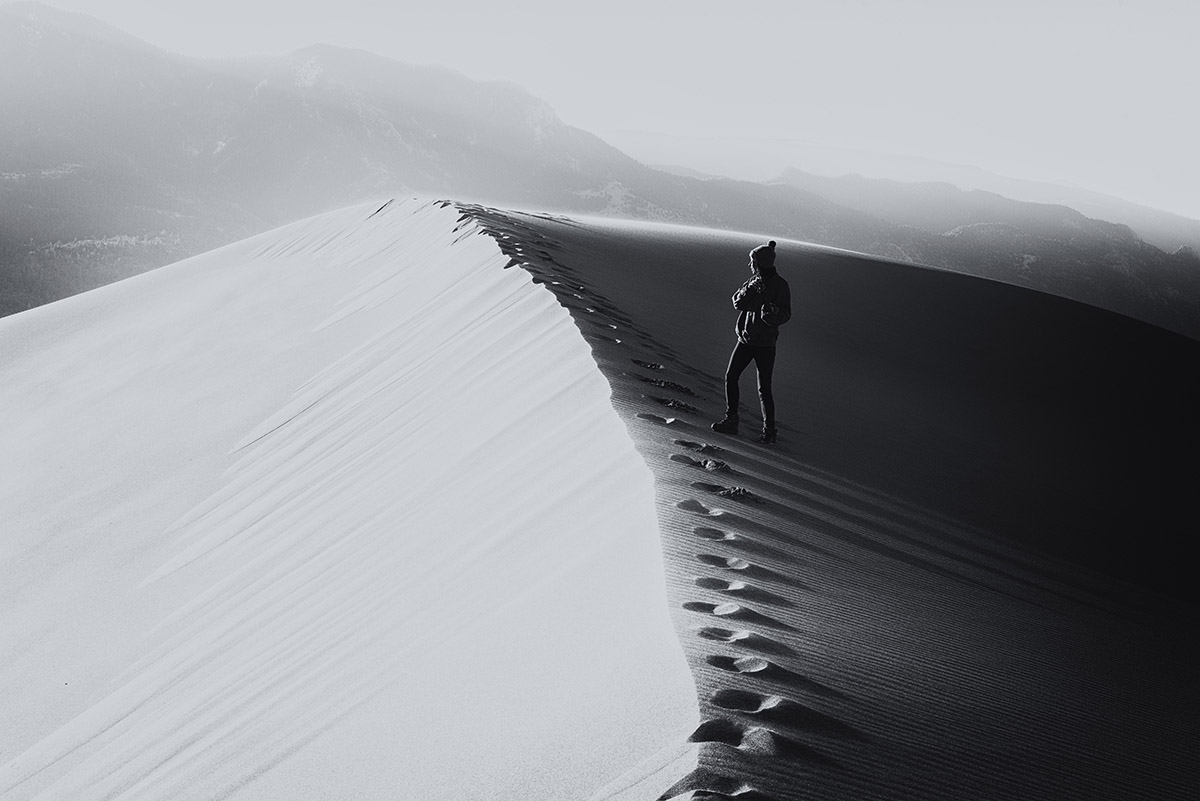The Ultimate Road Trip
Peter Zelinka captures desert and mountain scenes out West with his Tamron SP 70-200mm G2 VC lens.
More Photo Tips | Video Gallery | Photo Gallery | Enewsletter sign-up
By Jenn Gidman
Images by Peter Zelinka
It was a 2012 backpacking trip to Rocky Mountain National Park that first planted the photography seed in Ohio's Peter Zelinka. "I was really blown away by how beautiful everything is out West," he says. By 2014, he decided he wanted to delve more into photography and bought his first DSLR, which he used for macro and Milky Way photos. Then, in 2016, he took an even bigger step.
"I figured I harbored enough passion for photography to quit my job as an IT guy and pursue photography full time," he says. And so he did, making his first official act as a dedicated photographer a four-month road trip across the Western US, stopping at 15 national parks along a 15,000-mile course. More recently, Peter traveled this summer to witness the solar eclipse and check out the sights in the southern Utah deserts and the mountains of Colorado.
This time around, he brought along the new Tamron SP 70-200mm F/2.8 VC G2 lens. "I already have the SP 24-70mm VC and SP 150-600mm VC lenses, but I wanted a lens to cover the focal length range in between those two," he says. "The 70-200mm G2 really delivered, whether I wanted to capture a raven watching us having lunch, climbers ascending a rock wall, or some of those sweeping landscapes you see here. I even got in some portrait shoots. Plus, I do a lot of shooting in low-light scenarios, so having the Vibration Compensation (VC) on that lens was a huge help in that regard."
Peter's approach to nature and landscape photography: heading to the most stunning locations he can find, waiting for the best light, then capturing what he sees as faithfully as he can. And sometimes that means taking calculated risks. "For instance, for one shoot in Colorado, I arrived at sunrise with about 100 other people," he says. "About an hour after sunrise, it started snowing and raining, and within an hour I was the only one left, but I sat in the car for six hours, waiting for the clouds to break so I could capture the fresh snow on the mountains."
He recalls a similar experience at Schwabacher Landing in Grand Teton National Park, where a willingness to wait out inclement weather again offered a photographic payoff. "Looking for storms and then having the patience to ride them out can be key to capturing a great photo," he says. "About 15 of us were waiting for the sunrise in the Tetons when a huge storm blew in. Half the sky was blue, half the sky was red, and then a rainbow arched right over the Tetons. Everyone was cheering."
On Peter's journeys with the 70-200mm G2, he was impressed with its ability to take a scene and crop it down to what he envisioned in his mind's eye. For example, in Arizona's Monument Valley Navajo Tribal Park, there's a pair of sandstone and shale buttes known as the West Mitten and East Mitten—named for their resemblance to huge mittens, complete with thumbs, sticking up out of the ground. "There was a horde of photographers waiting for sunset on the evening I was there," Peter says. "I'd taken a few wide-angle shots, which came out pretty good, but I really wanted to isolate one of the Mittens. I set up my tripod and let the 70-200 do its thing. This image was taken toward the end of the sunset, when just the top of the Mitten was lit up by those golden rays."
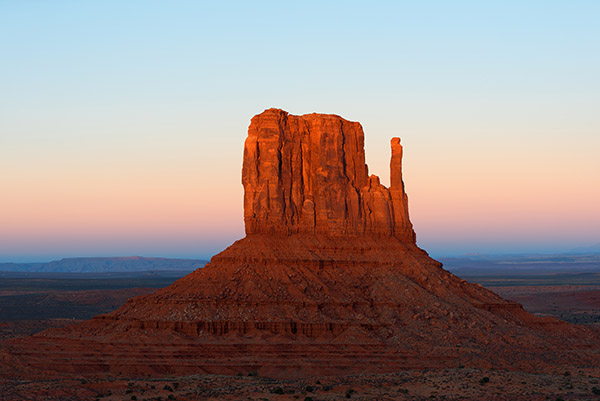
80mm, F/2.8, 1/500th sec., ISO 200
The Shafer Trail in Canyonlands National Park is a steep dirt path that descends nearly 2,000 feet into the canyons below. "You typically can get a view like that only if you're flying a drone," he says. "Most people head to this overlook where I was situated to capture a wide-angle shot of the valley. But I wanted to isolate that one section of road, which I did by zooming in to 110mm. It's not a heavily traveled thoroughfare, so I was lucky to get that one car driving along the road in the lower part of the frame—it offers a nice sense of scale. I used a color filter for this image, which is why the road seems to stand out a bit more."
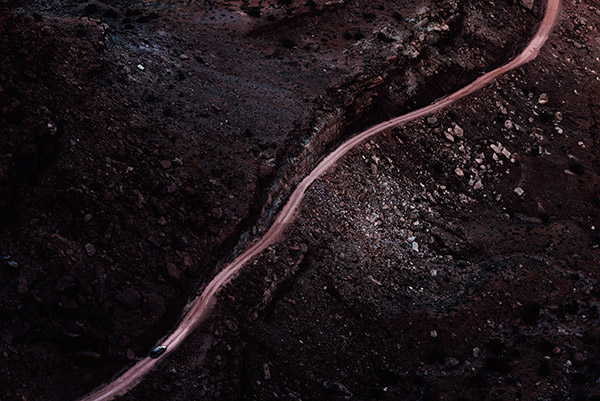
110mm, F/6.3, 1/500th sec., ISO 100
Getting people into his landscape and nature shots is often incidental, as can be seen in his photo of a local on his horse overlooking Monument Valley, located along the Utah-Arizona border. "I actually try to keep civilization and people out of my images, because I want people to feel like they're in the middle of nowhere when they see my photos," he says. "Sometimes, though, it works out well when people do end up in my shots. For instance, I recently took a photo in Great Sand Dunes National Park, and two tiny people ended up at the bottom of the massive sand dunes. It really helped show how immense the dunes are."
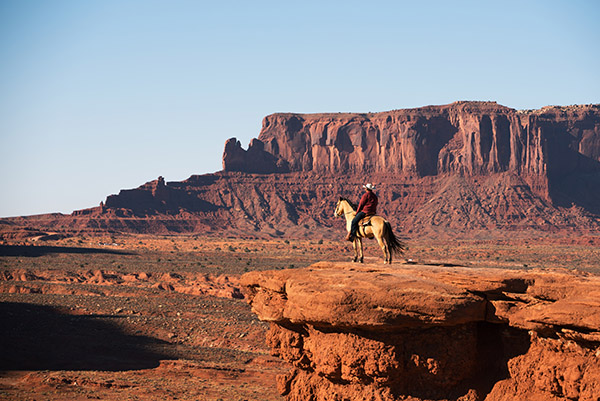
145mm, F/5.6, 1/640th sec., ISO 100
Sometimes Peter even gets to be part of the action. "My friend and I were staying at a hostel in Moab, and almost everyone there was a climber," he says. "They invited us to go climbing with them the next day. When we drove out the next morning, we found about 50 of them on the side of this sheer cliff wall."
Peter wanted to get photos of them climbing up the rock face, but from a more unusual vantage point. "They put me in a harness, and I climbed up the side of the rock wall, with all of my gear in my bag, so I could perch at the top," he says. "Once I got up there, I just sat and took photos of the climbers as they came up after me. Sometimes you have to do crazy things to get the shots you want."
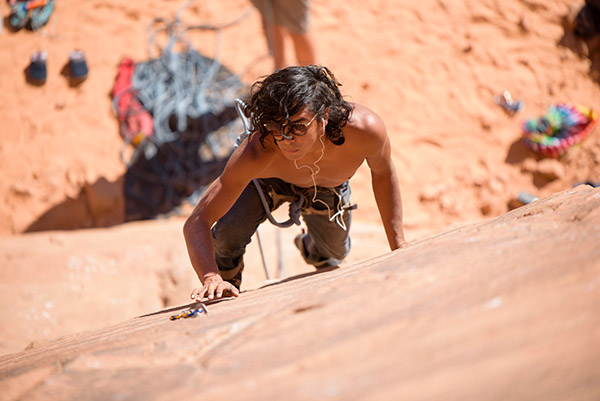
200mm, F/2.8, 1/800th sec., ISO 100
The lighting and mood occasionally compels Peter to switch to black-and-white mode. "I'll do so if there's not that much eye-catching color in an image," he says. "I'll strip out the color in those cases and look for the contrast of the light and the dark. Other times I may spy really jaw-dropping lighting, and I don't want the color to distract from that, so I'll put it in black and white then, too."
That's what happened when he was traversing Arizona's Canyon de Chelly, surrounded on all sides by sheer cliff walls. "Once again, I wanted to zoom in with the 70-200 and see what I could isolate along those walls," Peter says. "Then I noticed that almost in the middle of my frame was a spot where the dark met the light. I zoomed in to capture that, and when I converted it to black and white, I got the bonus effect of emphasizing all of those horizontal and vertical striations in the rock."
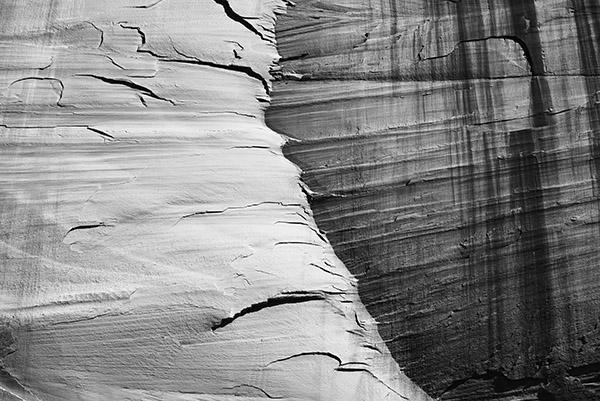
80mm, F/5, 1/1000th sec., ISO 200
The same applied for a foray into Great Sand Dunes National Park, where Peter's friend Sierra trudged across them for her very first time. "The way the light hit one side of the dunes and left the other in shadow was amazing," Peter says. "It was an OK photo in color, but it was only when I turned it into a black and white that I realized how interesting the lighting was. When you look at the footprints, you can see the individual shadow falling from each footprint."
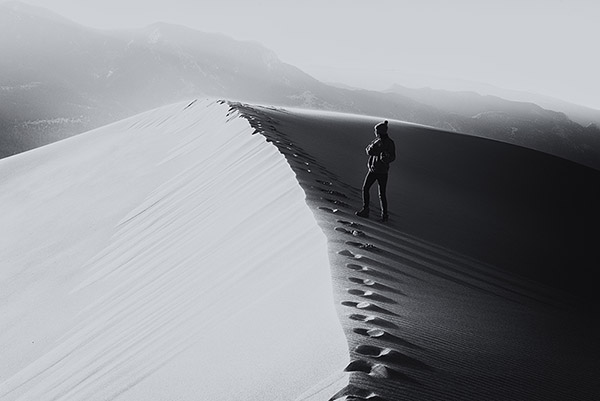
70mm, F/16, 1/125th sec., ISO 200
Peter put the 70-200 G2 through its paces in the evening and nighttime hours as well. "When I was in Arches National Park, we gathered at Delicate Arch for sunset and to take some Milky Way photos," he says. "There were probably 100 people there for the sunset and I got tired of having all of them show up in my Delicate Arch shot, so I turned around and looked to the west where the sun was setting. You could see the taillights of the cars as they drove up the side of the huge hillside. I thought it would be neat to do a long exposure, so I put my 70-200 on a tripod and took about three or four 25-second photos; then I used the 'Lighten' blending mode, like I was doing a star trails photo."
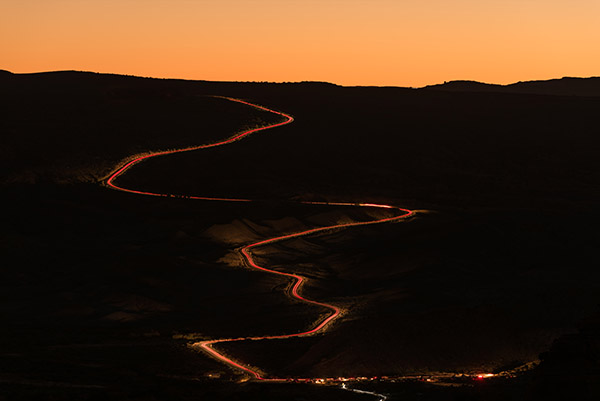
200mm, F/8, 25 sec., ISO 100
Astrophotographers in the Northern Hemisphere looking for something to shoot in the winter off-season, when the Milky Way is barely visible, often turn their sights on the Orion nebula. "In the past when I've tried to photograph the nebula, I only had a 100mm macro lens," Peter says. "When I got the 70-200, I really wanted to capture a photo of it with that extra zoom range. The trick to getting a photo like this is to use a star tracker, which moves your camera at the same speed as the stars, so you can take much longer photos without motion blur."
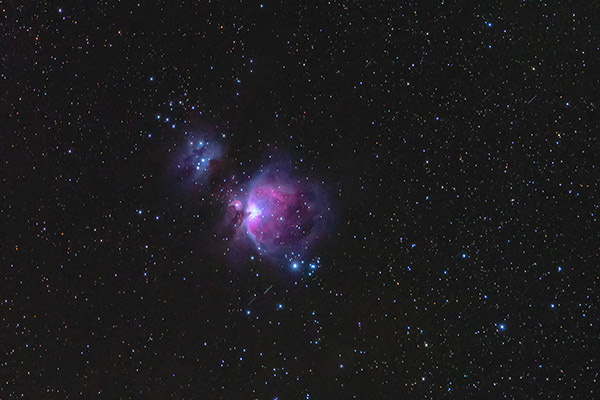
200mm, F/4, 20 sec., ISO 1600
He says he was blown away when he saw this photo as the result of his efforts. "Even astrophotographers were impressed with the way it came out," he says. "And those colors you see in those stars are how they really are. As you learn about astrophotography, you realize that most of the stars are actually orange and red and yellow; the overly blue or white ones you see, say, in the Milky Way, aren't necessarily scientifically accurate. You'd be surprised at what turns up in the night sky."
Peter shoots in RAW, so retouching his images remains an integral, final step in his workflow. "When I bring my photos into Adobe Camera Raw, I typically bring up the whites a bit, as well as the shadows, and turn down the highlights," he says. "Then, when I bring them into Photoshop to finalize, I'll often apply a filter effect just to bring out certain colors that were muted for one reason or another. With my images, I want to get the colors the way I saw them more than anything else."
To see more of Peter Zelinka's work, go to www.peterzelinka.com.
More Photo Tips | Watch Videos | Learn More About Tamron Lenses | Photo Gallery
